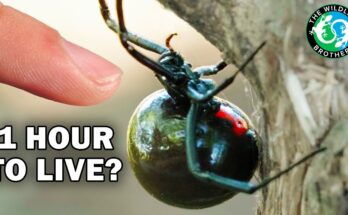
At first glance, it may seem strange to ask what role potatoes could possibly play in the automotive world. After all, potatoes are known for being a humble food staple—not exactly something you’d associate with engines, tires, or high-performance vehicles. However, when we dive deeper, we discover that potatoes have surprising and creative applications in the car industry, science experiments, and even in environmental innovation. Let’s explore how these starchy vegetables have found their way into the world of automobiles.
1. Bioplastics: Turning Potatoes into Car Parts
One of the most significant uses of potatoes in cars comes from the starch they contain. Potato starch can be used to make bioplastics, which are a sustainable alternative to petroleum-based plastics. These bioplastics are biodegradable, reducing environmental harm.
Car manufacturers have begun experimenting with bioplastics made from potato starch to create interior components like dashboards, trims, and door panels. These parts are not only lightweight but also environmentally friendly. Some electric vehicle companies and eco-friendly brands are particularly interested in these materials as they aim to reduce their carbon footprint and reliance on fossil fuels.
2. Biofuel from Potato Waste
Potatoes are rich in carbohydrates, making them an excellent source of ethanol—a type of biofuel. Scientists and engineers can ferment the sugars in potato waste to produce ethanol, which can then be blended with gasoline or used directly in modified engines.
Countries with significant potato production, such as Canada and the Netherlands, have experimented with using surplus or spoiled potatoes to create ethanol. This biofuel can be used to power certain vehicles, making use of agricultural waste and reducing reliance on traditional fossil fuels.
This method not only helps in waste management but also presents a renewable alternative to gasoline. As the world moves toward cleaner energy, potato-based ethanol could play a small but valuable role.

3. Potatoes in Battery Science Demonstrations
While not a direct use in cars, potato-powered batteries are often used to demonstrate how chemical energy can be converted into electrical energy. These experiments typically involve inserting two different metals (like zinc and copper) into a potato, generating a small electrical current.
This kind of simple battery may not be powerful enough to run a car, but it plays an important role in education. Students and enthusiasts learn how basic electrochemical reactions work—knowledge that’s crucial in the development of car batteries, especially for electric vehicles (EVs). It’s not unusual for these demonstrations to serve as inspiration for future scientists and engineers working in automotive technology.
4. Polishing Headlights with Potatoes
Believe it or not, potatoes can help with cleaning and maintaining car headlights. The inside of a raw potato contains natural acids and starch that can help clean cloudy or foggy headlights.
To do this, a person can cut a raw potato in half and rub it over the plastic surface of the headlight. The starch helps to lift dirt and oxidation. After rubbing the potato over the headlight, it’s rinsed off with water and polished with a clean cloth. While this isn’t a professional-grade solution, it’s a simple home remedy that car owners sometimes use in a pinch.
5. Reducing Road Dust with Potato By-products
In some parts of the world, potato processing by-products are used to reduce dust on gravel roads. A by-product called potato juice—the liquid left over after processing potatoes—is sprayed on dusty roads to reduce airborne particles.
This application is especially helpful in rural areas or near construction zones, where dust can be a major nuisance or hazard. By using what would otherwise be agricultural waste, this method offers a sustainable and cost-effective solution to manage road conditions. It may not be inside the car, but it certainly helps vehicles operate more smoothly and safely.

6. Sustainable Tire Development
The rubber in tires is typically made with petroleum-based products. However, researchers are exploring alternatives that include natural starches like those found in potatoes. Starch-based additives can help reinforce the rubber, making it more sustainable without sacrificing performance.
This technology is still in the experimental phase, but companies focused on green innovation are testing potato starch in tire prototypes. If successful, it could lead to a new generation of eco-friendly tires that contribute to both vehicle performance and environmental conservation.
7. Fun Fact: Potatoes Used in Safety Testing
While not a widespread practice, there have been quirky instances where potatoes were used in testing vehicle safety and crash simulations—especially for seat impact experiments. Due to their density and water content, potatoes can mimic the properties of certain organic materials. This use is more about experimentation than practicality, but it shows how creative researchers can be when testing new methods or tools.

8. Potatoes as Emergency Tools
This one may sound a bit odd, but in cold climates, some drivers use a potato trick to help prevent their windshields from icing overnight. Before going to bed, they cut a raw potato in half and rub it over the windshield. The starch from the potato creates a temporary layer on the glass that helps prevent ice from sticking.
It’s a trick that’s been passed down through generations and is often used when commercial windshield treatments are unavailable. While not directly related to engine or mechanical performance, it’s another way the humble potato helps drivers.
9. Potatoes Inspire Innovation
Potatoes also play a symbolic role in encouraging innovative thinking in the auto industry. From being used in science fairs to solving minor vehicle maintenance issues, potatoes show how natural materials can be repurposed creatively. Their use in vehicles—even if limited—is part of a broader push toward sustainable innovation and eco-conscious design.
As car manufacturers seek greener materials and better ways to recycle waste, unusual sources like potatoes become a topic of serious research. With the continued advancement of green technology, more natural substances—like corn, sugarcane, and yes, even potatoes—are being reimagined in the automotive space.

Conclusion
Who would’ve thought that potatoes could play so many roles in the world of cars? From fueling engines to polishing headlights and even helping to develop sustainable materials, this simple vegetable is surprisingly versatile. While we’re not likely to see cars made entirely out of potatoes anytime soon, their applications in science, eco-friendly innovations, and practical maintenance tricks show that they have more to offer than just being a tasty side dish.
As we move toward a more sustainable future, don’t be surprised if potatoes and other humble crops become a bigger part of the automotive world. Sometimes, the best solutions grow right out of the ground.



